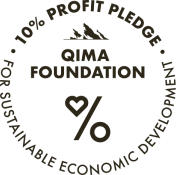8.
Bait Al Yaziji Women Farmers
Jury code : 9332
jury score :
89.01
Genetics :
Yemenia
Process :
Natural
lot size :
110.00LBS
traceability
VILLAGE :Hejrat Al Ain
REGION : Hayma Dakhiliya
GOVERNORATE : Sana'a
ALTITUDE :2000-2300masl
FLAVOUR PROFILE
Apricot, Mango, Blueberry, Red Grapefruit, Floral Tea, Honey
Bait Al Yaziji Women Farmers
The village of Bait Al-Yaziji, in the highlands of Hayma Dakhiliya, has seen a gradual transformation. Where qat once dominated the fields, coffee has taken root, shaped by generations of farming families. Fatimah, now in her sixties, has worked the terraces since childhood, tending 300 trees irrigated by rain and mountain springs. Ritaj, twenty, cultivates 250 trees, checking them daily with the ambition of expanding her land. Balqis, in her forties, farms alongside her household of 15, where women lead the harvesting and drying while men prepare the soil and maintain irrigation. Each carries forward the knowledge passed down through their families, ensuring the work of the past continues in the present.
At altitudes of 2,000 to 2,300 metres, the terraces of Hejrat Al Ain demand resilience. Harvests are modest, typically between 70 and 250 kilograms per farm, yet they remain the backbone of household income. Families work collectively from dawn to dusk during the season, carrying home cherries that represent both livelihood and heritage. Coffee has gradually replaced qat in Bait Al-Yaziji, marking both change and continuity for the village.
This lot is naturally processed from Yemenia, showing the vibrant fruit clarity and floral lift for which the region is known. It is a reflection of Bait Al-Yaziji’s farmers, who sustain their families today while preserving Yemen’s coffee legacy for the future.

